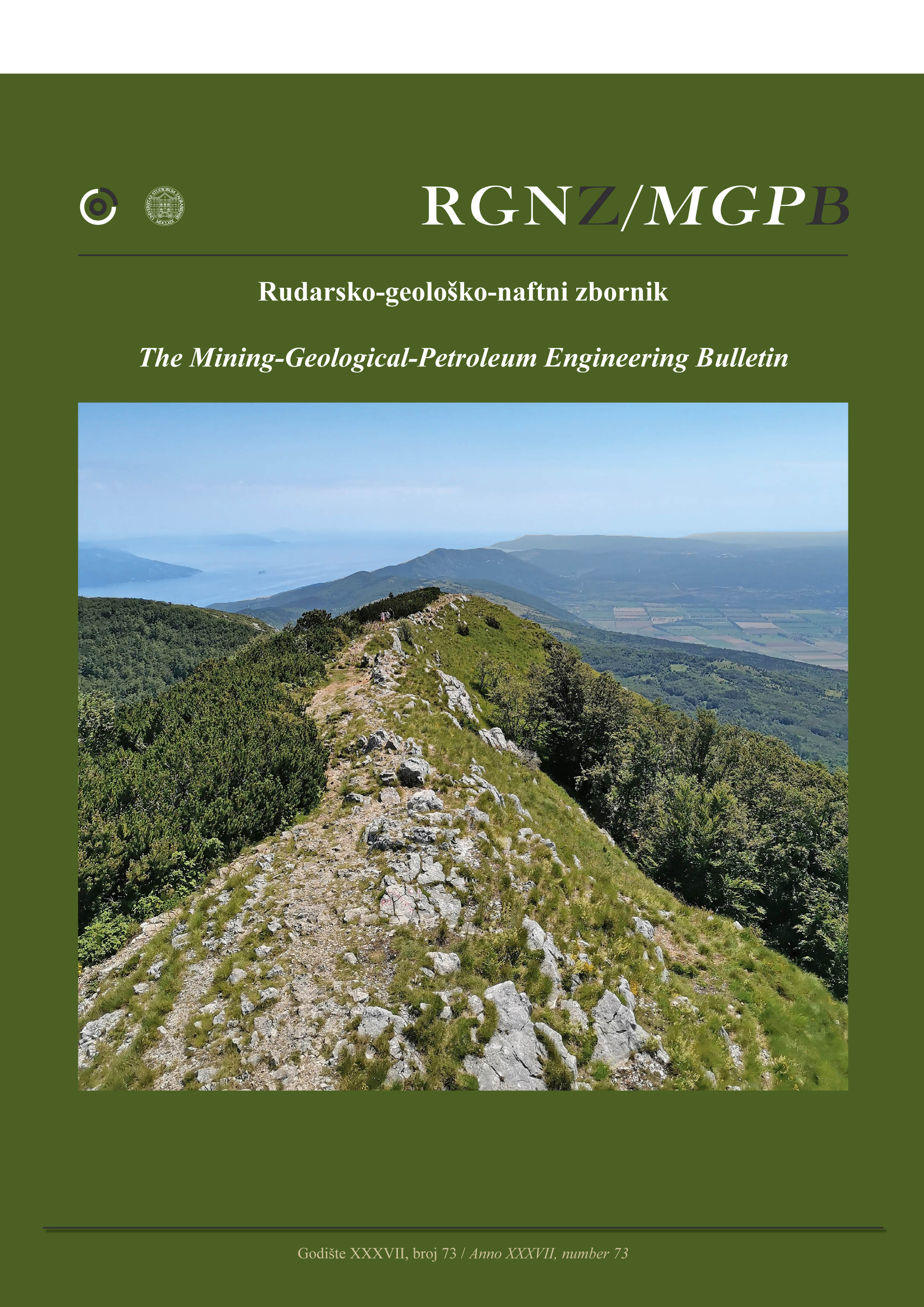New Insight into the Structural Model in Southern Sumatra Indonesia using Gravity and Magnetic Data: Implications for Geothermal Resources
DOI:
https://doi.org/10.17794/rgn.2025.2.4Keywords:
gravity methods, magnetic methods, geothermal, Great Sumatran FaultAbstract
The island of Sumatra was formed through complex tectonic processes that produce a variety of geological resources, including geothermal potential. Fault structures, particularly the Great Sumatran Fault (GSF), which are associated with surface geothermal manifestations. This study aims to comprehensively evaluate the geothermal potential in southern Sumatra using a combination of gravity and magnetic data.. The results show that the heat source in Sumatra is intrusive volcanic rocks with a density of 2.8 g/cm³ and a susceptibility value of 0.007, extending from west to south in a northwest-southeast pattern. These rocks are part of the Kikim Formation (Tpok) from the magma residue of Mount Bukit Besar, Bukit Lumut, and Bukit Balai, at a depth of more than 7 km. The reservoir layer in the center is likely caused by the Sum
The island of Sumatra was formed through complex tectonic processes that produce a variety of geological resources, including geothermal potential. Fault structures, particularly the Great Sumatran Fault (GSF), are associated with surface geothermal manifestations. The objective of this investigation is to conduct a thorough assessment of the geothermal potential in southern Sumatra by utilising a combination of magnetic and gravity data. The results show that the heat source in Sumatra is intrusive volcanic rocks with a density of 2.8 g/cm³ and a susceptibility value of 0.007, extending from west to south in a northwest-southeast pattern. These rocks are part of the Kikim Formation (Tpok) from the magma residue of Mount Bukit Besar, Bukit Lumut, and Bukit Balai, at a depth of more than 7 km. The reservoir layer in the center is likely caused by the Sumatra Fault fracture zone or sedimentary rocks, consisting of the Hulusimpang and Gumai formations, with a density of 2.6 g/cm³ and a susceptibility of 0.075 at a depth of 1000–1500 m. The heat flow ranges from 55.1 to 79 mW/m², and the geothermal gradient is between 21.1 and 31.6°C/km. Another finding is the high geothermal gradient observed beneath volcanic complexes, including the Bukit Barisan Mountains area. The northwest-southeast fault structure parallel to the GSF suggests that this fault controls the geothermal system in Sumatra, providing new insight into the fault control mechanism of the geothermal system. The integration of gravity and magnetic data reveals new relationships between tectonic structures in the GSF zone and previously unexplored geothermal potential.
Downloads
Published
Issue
Section
License
Copyright (c) 2024 Irfan Prasetyo, Wawan Gunawan Abdul Kadir , Dadi Abdurrahman , Darharta Dahrin , Khalil Ibrahim , Andri Kurniawan

This work is licensed under a Creative Commons Attribution 4.0 International License.
Creative Commons-BY
Authors who publish with this journal agree to the following terms:
In agreeing this form, you certify that:
- You read the ethical codex of the RGN zbornik available at journal web.
- You submitted work is your original work, and has not previously been published and does not include any form of plagiarism.
- You own copyright in the submitted work, and are therefore permitted to assign the licence to publish to RGN zbornik.
- Your submitted work contains no violation of any existing copyright or other third party right or any material of an obscene, libellous or otherwise unlawful nature.
- You have obtained permission for and acknowledged the source of any illustrations, diagrams or other material included in the work of which you are not the copyright owner.
- You have taken due care to ensure the accuracy of the work, and that, to the best of your knowledge, there are no false statements made within it.
- All co-authors of this submitted work are aware of, and in agreement with, the terms of this licence and that the submitted manuscript has been approved by these authors.
Publication licence
You retain copyright in your submitted work, according to journal license policy (CC-BY). By signing this form you agree that RGN zbornik may publish it under the publication licence. In summary the licence allows the following:
Anyone is free:
- To copy, distribute, display, and perform the work.
- To make derivative works.
Under the following conditions:
- The original author must always be given credit.
- The work may not be used for commercial purposes.
- If the work is altered, transformed, or built upon, the resulting work may only be distributed under a licence identical to this one.
Exceptions to the licence
In addition to publishing the work printed under the above licence, RGN zbornik will also enable the work to be visible online.
The journal editorial can change the licence rules anytime but it cannot retroactively restrict author(s) rights.


